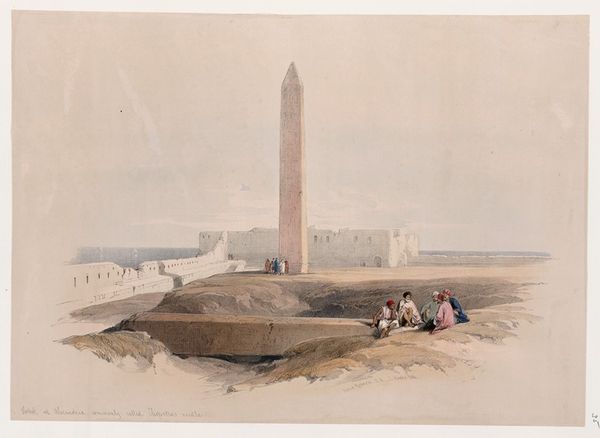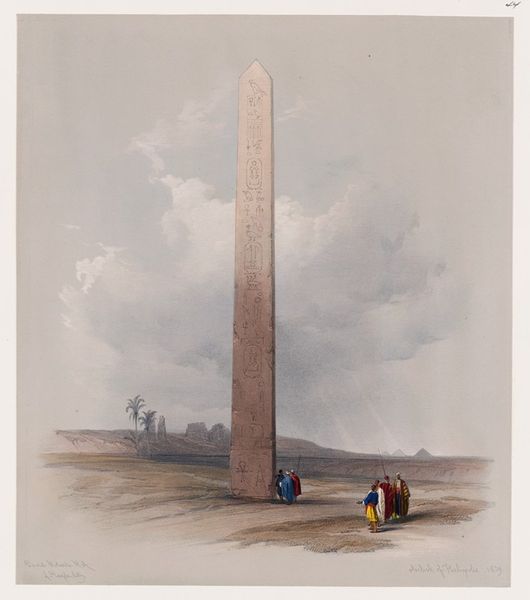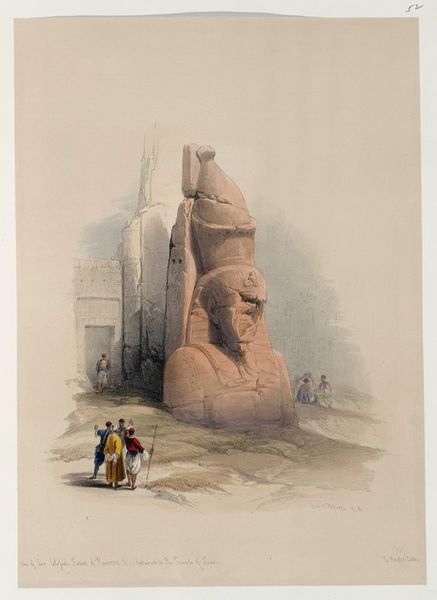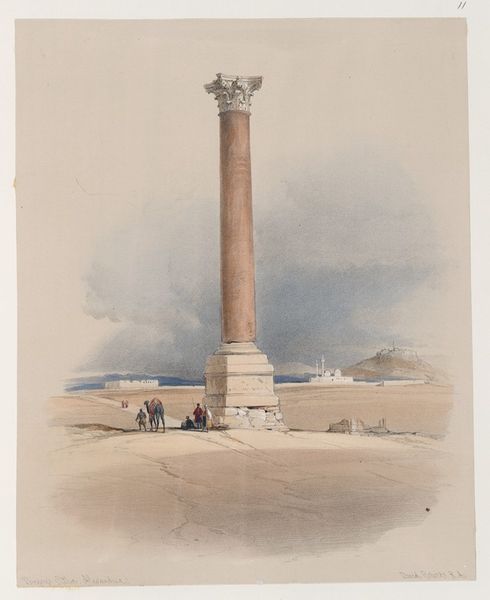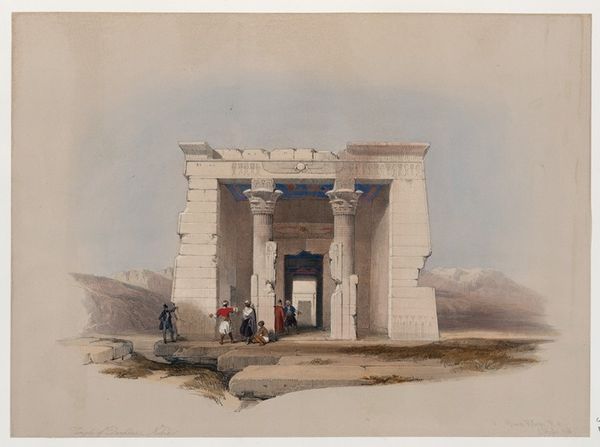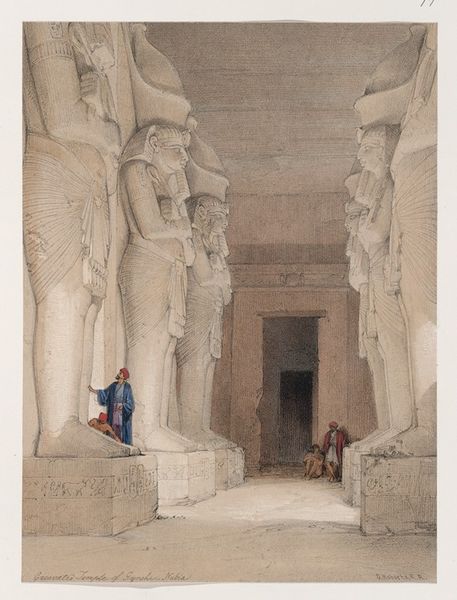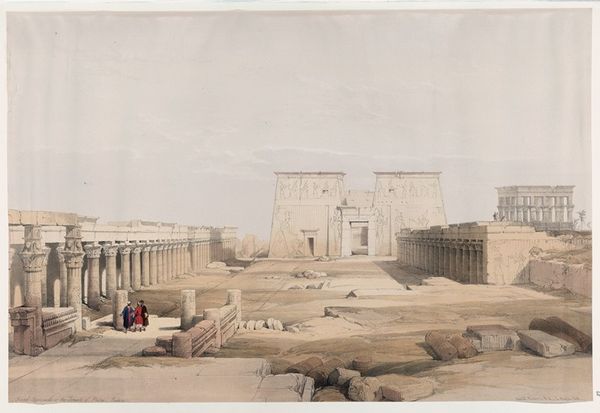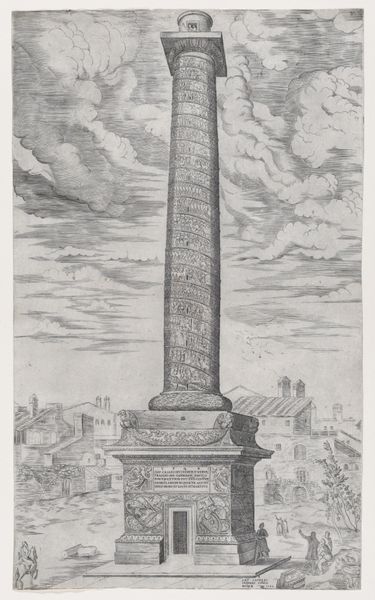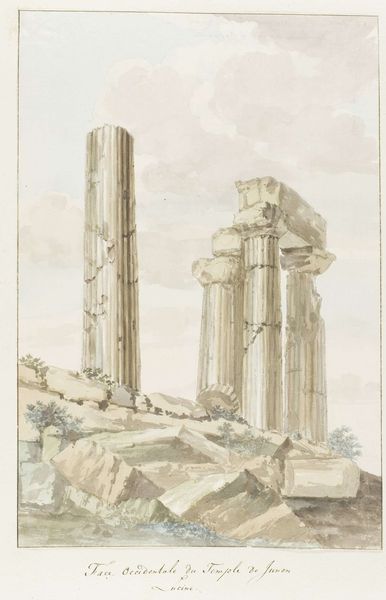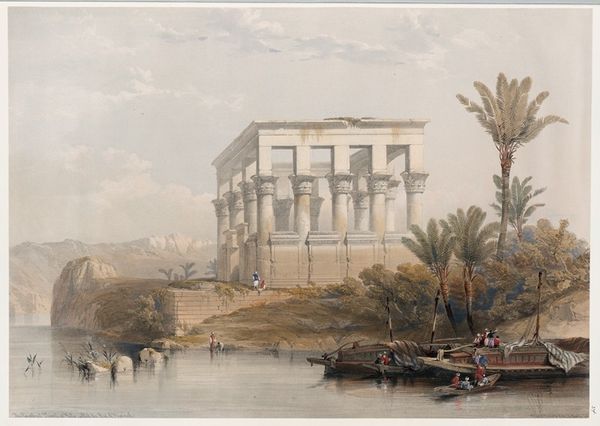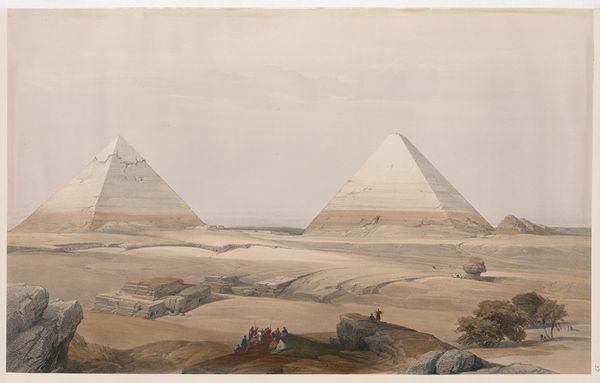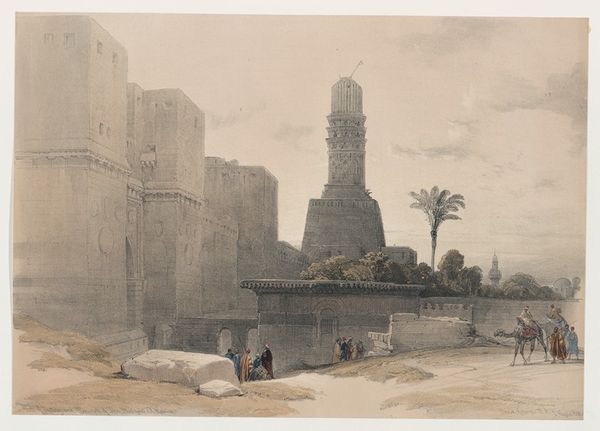
painting, watercolor
#
painting
#
landscape
#
ancient-egyptian-art
#
watercolor
#
orientalism
#
watercolour illustration
#
history-painting
#
academic-art
#
watercolor
#
realism
Copyright: Public Domain: Artvee
David Roberts created this artwork, Luxor. Dec. 1st, 1838, using watercolor to capture the imposing architecture of Luxor, Egypt. The painting’s structure is dominated by vertical lines and geometric shapes, balanced by a warm, earthy palette that invites contemplation. Consider how Roberts uses the obelisk as a central visual anchor, its hieroglyphs functioning as both a narrative and a formal element. The scale and precision of the obelisk contrasts with the rougher textures of the temple ruins and foreground. This is not merely a depiction of ruins, but an arrangement of forms, each shape and line imbued with symbolic weight. The composition prompts questions about the relationship between permanence and decay, order and chaos. The use of perspective and the subdued coloration contribute to a broader reflection on how we perceive and assign meaning to historical sites. The painting serves as a stage for the interplay of formal and cultural elements. It invites us to decode the visual signs and structural arrangements, recognizing that its meanings are ever evolving.
Comments
No comments
Be the first to comment and join the conversation on the ultimate creative platform.

